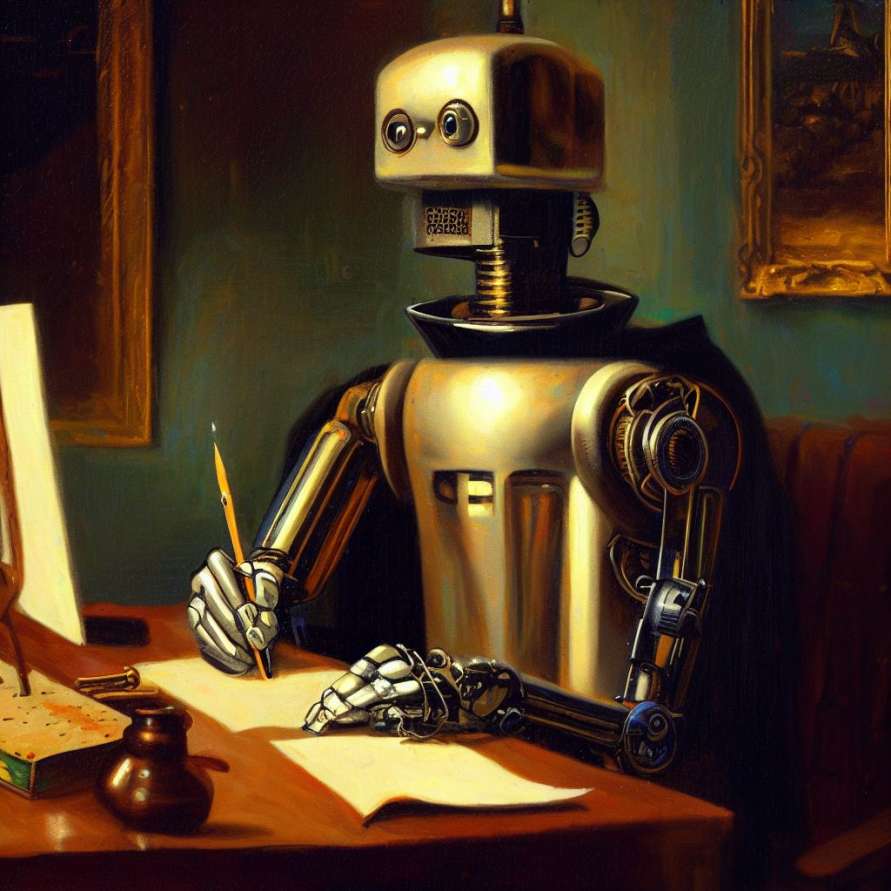On AI: A Letter To Editors
EDITOR’s NOTE: Technology can enable or cripple depending on how its used. We all need to know this in the age where even biology is merging with engineering to create alternate life. We came across the below blog post by author DL Shirey and with permission have reproduced it. We hope it will help generate awareness and a sense of responsibility among the writing and publishing community.
DL Shirey’s fiction has appeared in FreedomFiction.com in the past (refer search results here).
Refer original blog post at Shirey’s website by clicking here.

Dear Editors,
Your Lit Mags and Journals (click here) are probably being infiltrated with GPT-partnered stories or AI-plagiarized writing. It’s becoming a problem.
For writers, like myself, who produce original work, please consider using one of the tools listed below to help detect derivative content. You are one of the last lines of defense to keep creative writing pure.
In previous posts on my blog (click here), I used ChatGPT to do research on various ways it might help/hinder the writing process. When I inquired about methods editors might use to detect chatbot-created writing, ChatGPT responded:
ChatGPT
As of my knowledge cutoff in September 2021, there weren’t any widely available websites or apps specifically designed to detect AI-generated text like ChatGPT. However, the landscape of AI and NLP tools and services is constantly evolving, so it’s possible that new tools or platforms may have emerged since then.
So much for up-to-date information. The following list is gleaned from a good, old Google search:
Content at Scale
https://contentatscale.ai/
This AI writing platform incorporates a distinctive AI detector, which enhances its writing capabilities. Warning: the company proudly promotes its AI writing tool’s ability to generate content that remains undetectable as being AI-generated.
Copyleaks
https://copyleaks.com/
This service is currently free and is capable of identifying a diverse range of AI-generated content, such as pieces created by ChatGPT, GPT3, humans, AI & humans, and others. Additionally, there’s an option to download a Chrome Extension that can detect such content while you browse web pages.
Corrector App
https://corrector.app/
The Corrector App now provides writers with a new AI content detection tool in addition to its ability to identify grammatical errors in writing.
Crossplag
https://www.crossplag.com/
Like other similar tools, Crossplag asks users to copy and paste text into the window on the screen. After that, it gives a rating to show how genuine the content is.
GPT Zero
https://gptzero.me/
More than 1 million people have used this tool to check if AI created the content. GPT Zero’s interface is easy to use. It’s like Google’s homepage, with not a lot of clutter.
Kazan SEO
https://kazanseo.com/
The comprehensive SEO tool provides a wide range of functionalities, such as keyword clustering, content optimization, text extraction, and AI-powered content generation. Now it has added AI-based content detection.
Originality.AI
https://originality.ai/
This Google Chrome extension is distinct due to its ability to check in real-time if a page was created by AI. Its primary value is speed, eliminating the need to manually copy, paste, or provide a URL for evaluation.
Sapling
https://sapling.ai/
This content detector can tell if an article was written by GPT-3 or ChatGPT by checking just 50 words. That’s far fewer words required by other tools.
I have not tested the efficacy of these detection tools but wanted to offer possible resources. Please help prevent AI-creep from infecting original writing.
Sincerely,
DL Shirey
www.dlshirey.com























